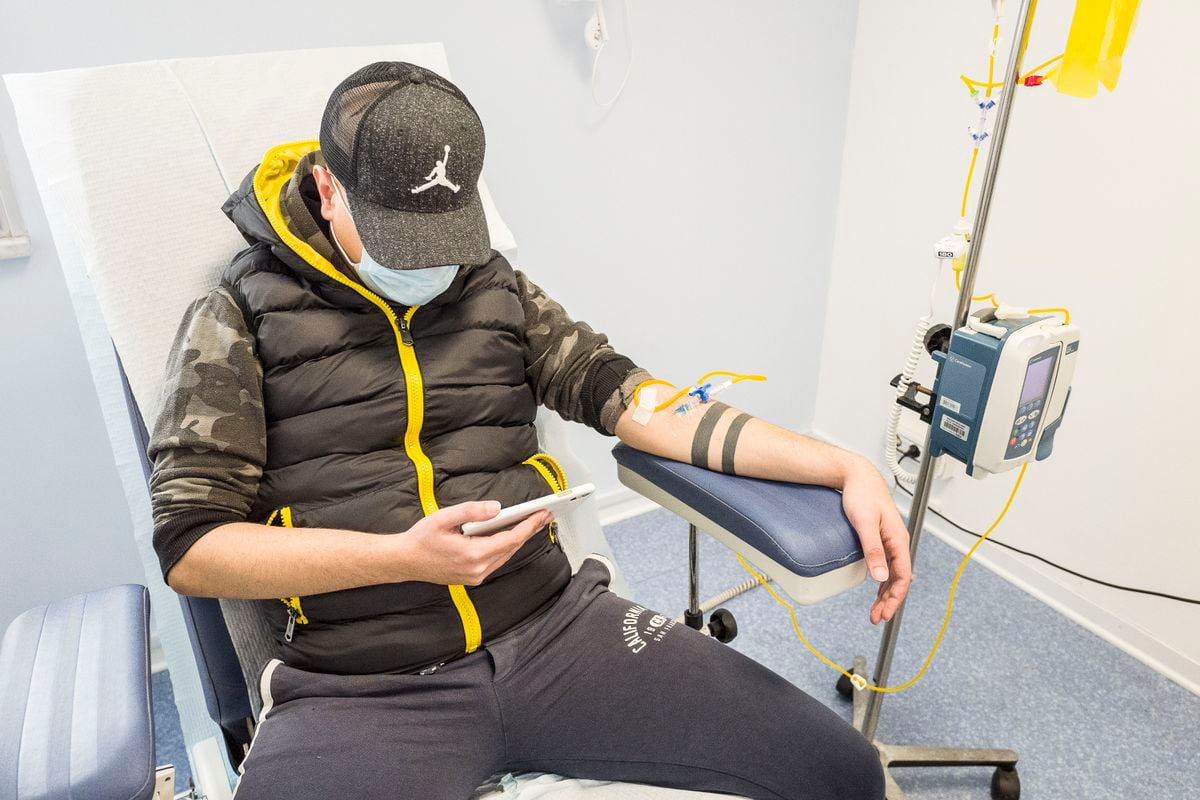Before being able to even ask any questions, two of the sources consulted to write this report trace the same reflection on the other side of the phone, with pinpoint accuracy: “It is a very good study because it reflects worldwide what we see every day at micro level in our consultations”.
The study to which both experts refer was recently published in
The British Medical Journal
and analyzes the evolution during the last three decades (1990-2019) in 204 countries of the world of the incidence of type 2 diabetes in the adolescent and young population (15-39 years), the one that by age should have the least probability of developing this type of diabetes. chronic pathology.
The results are worrying to say the least.
In just 30 years, the prevalence of type 2 diabetes in these population groups has increased by 56.4%, from an incidence of 117 cases per 100,000 inhabitants in 1990, to one of 183 in 2019.
"As our findings indicate, early-onset type 2 diabetes is a growing public health problem," Fan Wang, a professor in the Department of Epidemiology at the Faculty of Public Health at Harbin Medical University, explains by email to EL PAÍS ( China) and one of the main authors of the research, who highlights that this trend, general throughout the world, is especially visible in developing countries of medium or medium-low socioeconomic level.
Something that could be explained by the rapid social and economic changes that have taken place in these countries and that have introduced and generalized unhealthy lifestyle habits in them, explains Wang: "For example, the consumption of sugary drinks more than doubled among Mexican adolescents from 12 to 18 years old between 1999 and 2006.
As the researcher argues, what is worrying about these data on the early onset of type 2 diabetes, in addition to the present scenario, lies in the future burden of the disease for health systems as the population ages.
“Earlier onset of type 2 diabetes is associated with a longer duration of hyperglycemia and more rapid progression of the disease process (including severe insulin resistance and worsening pancreatic beta cell function), which leading to poorer glycemic control and increased risk of complications.”
disability and deaths
Some complications that are already observed in the study in the rates of disability and deaths associated with early-onset type 2 diabetes, mainly in developing countries and especially among women under 30 years of age.
According to Fan Wang, the rapid economic growth experienced in these decades by these nations of medium and medium-low socioeconomic status has brought with it a change in the spectrum of diseases, such that the disease burden has rapidly gone from showing a predominance of diseases communicable, maternal, neonatal and nutritional diseases, to an increase in noncommunicable diseases and injuries.
“In these countries the levels of universal health coverage for non-communicable diseases were much lower than those for communicable or neonatal diseases,
Ana Cebrián, spokesperson for the Diabetes Working Group of the Spanish Society of Family and Community Medicine (semFYC), finds the gender perspective offered by the study "particularly significant", since it shows that at the international level women under 30 years of age have worse diabetes-related quality of life, and higher rates of disability and mortality.
More information:
Gestational diabetes and its consequences on the mother and the development of the baby
“The journal of the American Society of Cardiology already published a study a few years ago on the significant increase in chronic pathology in women and on gender inequality in access to diagnosis and treatment.
This study shows us that in many countries the situation of women with diabetes is even worse.
We have gender inequality in cardiovascular pathology in general and in diabetes specifically, and this study sheds a lot of light on the matter”, Cebrián points out.
His opinion is endorsed by Wang: “We suspect that pregnancy and polycystic ovary syndrome in women, which are associated with insulin resistance, may contribute in part to the differences between the sexes.
But we also found that the highest burden of disease in women with type 2 diabetes was in countries with a low socioeconomic index, which could indicate that girls and women in less developed countries have less access to care services. medical condition and worse glycemic control.
Obesity as the main cause
The main risk factor attributable to the increase in the incidence of early-onset type 2 diabetes is overweight and obesity, regardless of the socioeconomic level of the country, as the authors of the study point out.
Although in the study they found a proportionally smaller contribution of some risk factors for the development of type 2 diabetes that varied by region, such as air pollution from environmental particles and smoking in countries with a high sociodemographic index and diets low in fruit and air pollution from solid fuels in homes in countries with a low sociodemographic index.
"Humanity is thousands and thousands of years old, but in the last 30 years we have experienced a brutal change in lifestyles, reflected above all in a sedentary lifestyle, poor diet and stress," adds Cristóbal Morales, an endocrinologist at the University Hospital. Virgen Macarena from Seville and member of the Spanish Diabetes Society (SED), who points out that obesity rates skyrocket with this new lifestyle and, with them, the incidence of type 2 diabetes also skyrockets. Social.
We live in an obesogenic world that is a breeding ground for the development of this type of pathology”, he affirms.
The figures prove it.
According to the latest WHO data, corresponding to 2016, since 1975 obesity rates have almost tripled worldwide.
In that year there were more than 340 million children and adolescents who were overweight or obese and the figure shot up to almost 650 million in the case of adults (13% of the world population).
It is a social disease.
We live in an obesogenic world that is a breeding ground for the development of this type of pathology”
Cristóbal Morales, Virgen Macarena University Hospital of Seville
With regard to Spain, data from the Global Obesity Observatory report that 16% of the population over 15 years of age suffers from obesity.
23.3% of children under 16 years of age are overweight and 17.3% are obese, according to the latest 2019 update of the Food, Physical Activity, Child Development and Obesity (ALADINO) study of the Food Safety and Nutrition Agency (AESAN).
To stop what has already been dubbed the global diabetes epidemic (a term coined by Dr. Paul Zimmet in 2001 to visualize the close relationship between type 2 diabetes and obesity), Cebrián highlights the importance of developing prevention policies: "We cannot change the socioeconomic reality of each country, not even that of each neighbourhood, but we can raise awareness among the population with accessible information adapted to each reality.
It is necessary to carry out a preventive policy from schools, from families, etc., because it has been shown that poor nutrition in childhood has a great impact on the incidence of obesity and diabetes”.
Morales, for his part, agrees on the importance of using resources in prevention: "Every euro invested means many euros of savings for the health system."
In addition, he points out the need to develop a National Obesity Plan in Spain that covers from childhood to old age: "We need a political consensus with a long-term vision to change this trend in the future."
In this National Plan, the endocrinologist also highlights the importance of investing in early diagnosis, treatment and patient training.
“These patients who have type 2 diabetes from a young age are very high risk.
You have to educate them therapeutically from minute one, since they have to be aware of the importance of changing their lifestyles, especially to lose weight”, emphasizes Morales.
Professor Fan Wang, from a more global perspective, points out the importance of developing countries implementing in their territories some public health interventions that have already been implemented in countries with a higher socioeconomic level and that have proven to be effective, such as the tax to cigarettes and the regulation of air quality.
“Countries in the stage of rapid socioeconomic change can learn from these successful initiatives.
As for the less socioeconomically developed countries, measures are recommended to improve home conditions and the availability, accessibility and affordability of healthy foods”.
Lastly, the author of the study points out the need to consider the gender differences shown by the study in the formulation of public policies.
“Based on what our study shows, effective prevention and control of type 2 diabetes in women under 30 years of age should be further strengthened, especially in less developed regions,” he concludes.
You can follow
EL PAÍS Salud y Bienestar
on
,
and
.

/cloudfront-eu-central-1.images.arcpublishing.com/prisa/FY6IUGSUQ5DHFEHYZAUX5TTZXQ.jpg)



/cloudfront-eu-central-1.images.arcpublishing.com/prisa/6GEKDOLV2NGJ7PQMJUEXGFLG6Y.JPG)


/cloudfront-eu-central-1.images.arcpublishing.com/prisa/K6S6W4EXJ5BQTOJZKVLQCIZDQY.jpg)